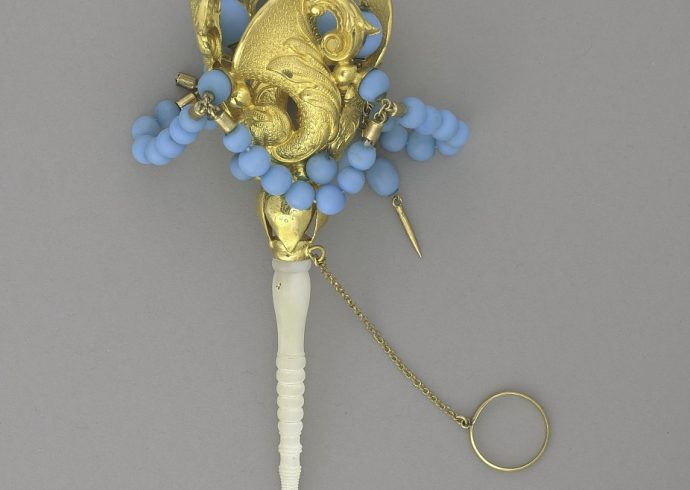
The Cameo Glass Technique
Cameo glass has been made since Roman times when portions of a glass vase or bowl were cut away to create a raised design in figures and animals. Over the centuries, cameo glass was made using a variety of techniques for cutting away a thin layer of the background glass, leaving smooth detailed designs that would be later emulated by glass companies well into the twentieth century. Relief glass designs were painstakingly made, requiring many hours to make.
One method of making cameo glass was by using an engraving wheel to slowly carve away the background layer from the design sketched onto the glass. A second method used involves hydrofluoric acids, which erodes the portion of glass to be removed from the vase or bowl. Before the acid is applied, the design is covered in wax to protect it from being eaten away by the acid. The strength of the acid can be controlled through its application to the glass. Depending on the strength, it may take more than one application to create a deeper cut around each raised design in the glass. A third method was by using other hand tools and applying pressure to the glass to cut away from the intended design on the glass, but this was the most time consuming method, the second being the cutting wheel.
English cameo glass was made by using the cutting wheel and acids in the late nineteenth century. England turned out the highest quality glass pieces that were costly, something only the wealthy could afford to purchase and display in their homes. John Northwood was one of the prominent cameo glass makers before he immigrated to the United States to open his own factory. Northwood borrowed the style and decoration from the famous Portland vase and made one of his own creation that took seven years to make. He did not make many pieces of cameo glass but the few pieces he did complete are now in museums.
Cameo glass can have a very slightly raised design or a more prominent raised design. The raised portion can be painted or layered with gold or silver gilt. One such example is an 1895 glass vase with pink flowers and stems. Helen Millard, a cameo glass maker based in the United Kingdom, creates beautiful art glassware frequently depicting scenes of nature against colorful backgrounds.
While antique cameo glassware is much sought after by glass collectors, much modern cameo glass is just as beautiful and collectible.
Image Credit: Marie-Lan Nguyen (user:Jastrow), CC BY 2.5, via Wikimedia Commons.


